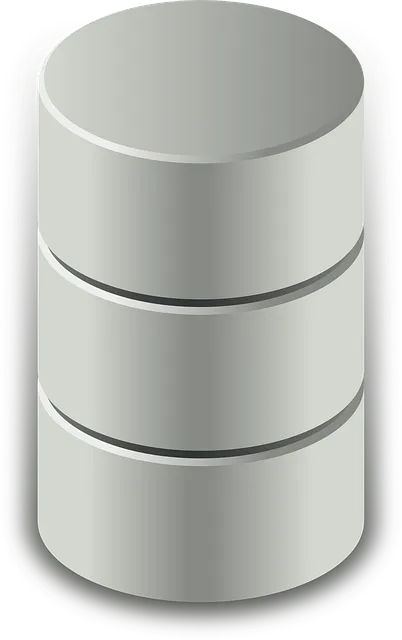Implementing a Hierarchy Schema with Breadcrumb JSON-LD is crucial for modern website success. This structured data helps search engines and users understand site navigation, improving SEO by enhancing internal linking, user experience, and click-through rates. By logically organizing categories like "Home," "Electronics," and "Clothing," breadcrumbs guide visitors intuitively, boosting satisfaction and reducing confusion. Search engines like Google utilize this data to display enhanced breadcrumbs in SERPs, incorporating relevant keywords for better visibility. Track CTRs, session durations, and bounce rates to measure effectiveness and ensure optimal online performance.
Adding breadcrumb schema to your website is a powerful way to enhance internal linking clarity and improve user experience. This hierarchical structure, based on hierarchy schema, allows search engines to better understand your site’s organization, resulting in more accurate representations of your site’s navigation in SERPs. By implementing a well-structured breadcrumb path, you not only guide users through your website but also unlock SEO advantages, making it an essential strategy for modern digital marketing.
- Understanding Breadcrumb Schema: A Hierarchical Approach to Internal Linking
- The Role of Schema in Search Engine Results Pages (SERPs)
- Implementing Breadcrumb Hierarchy: A Step-by-Step Guide
- Benefits: Enhanced User Experience and SEO Advantages
- Best Practices for Effective Breadcrumb Schemas
- Measuring Success: Tracking the Impact on Internal Linking and User Behavior
Understanding Breadcrumb Schema: A Hierarchical Approach to Internal Linking

Understanding Breadcrumb Schema is crucial for implementing a structured and hierarchical approach to internal linking. This schema provides a clear representation of a website’s navigation hierarchy, allowing search engines to comprehend the relationship between pages. By utilizing a Hierarchy Schema, webmasters can ensure that the site’s structure is not only intuitive for users but also easily interpretable by search engine crawlers.
A Breadcrumb JSON-LD is a powerful tool within this schema, enabling developers to embed structured data directly into a website’s HTML. This facilitates the display of an SEO Breadcrumb Trail in SERPs (Search Engine Results Pages), offering users and search engines alike a concise visual representation of their current location within the site’s hierarchy. The Schema for Navigation becomes particularly valuable for complex websites with intricate category systems, ensuring that visitors can navigate effortlessly while enhancing overall SEO performance.
The Role of Schema in Search Engine Results Pages (SERPs)

In today’s digital landscape, search engines like Google have evolved to become sophisticated information hubs, aiming to provide users with relevant and structured results. Schema markup plays a pivotal role in enhancing the presentation of websites in Search Engine Results Pages (SERPs). By using hierarchy schema, webmasters can convey the organizational structure of their sites, making it easier for both search algorithms and human visitors to navigate content. This subtle yet powerful tool allows for a more intuitive user experience, especially when delving into complex websites with intricate information architectures.
The implementation of Breadcrumb JSON-LD, or Markup for Crumbs, is one such example of schema in action. This markup enables Google to display breadcrumbs, showcasing the path a user has taken and providing context around their current location on the site. When Google Breadcrumb Display is utilized effectively, it not only improves internal linking clarity but also offers users a clearer understanding of their position within the website’s hierarchy. This visual representation can significantly enhance click-through rates and overall user engagement, making it an indispensable strategy for optimizing online visibility.
Implementing Breadcrumb Hierarchy: A Step-by-Step Guide

Implementing a clear breadcrumb hierarchy is an effective strategy to enhance user experience and boost SEO performance. This process involves structuring your website’s navigation in a logical, hierarchical manner, allowing users and search engines alike to understand the site’s information architecture. The first step is to identify the main categories and subcategories that represent the site’s content structure. For instance, if you run an e-commerce platform selling different product types, your hierarchy might start with “Home,” then branch out to categories like “Electronics,” “Clothing,” and “Home Goods.” Each category should have a direct link to its respective page, creating a clear path for users to navigate.
Next, utilize the Breadcrumb JSON-LD schema to implement this hierarchical structure on your website. This schema provides structured data that search engines can interpret, helping them display an enhanced SEO breadcrumb trail in SERPs. By including keywords relevant to each step of the hierarchy, you add context and improve click-through rates. For example, a user searching for “wireless headphones” might see a breadcrumb path like: “Home > Electronics > Headphones.” This visual representation not only assists users but also reinforces the site’s navigation, ensuring a seamless experience from initial search to purchase.
Benefits: Enhanced User Experience and SEO Advantages

Implementing a breadcrumb schema offers a multitude of benefits for both users and search engines. One of the primary advantages is enhanced user experience. Breadcrumbs provide a clear hierarchical structure, allowing visitors to navigate through a website’s content easily. This visual representation of the site’s architecture ensures users can understand their current location, explore related pages, and trace their steps back, thereby reducing confusion and improving overall satisfaction.
Moreover, incorporating breadcrumb schema has significant SEO advantages. It aids search engines like Google in better comprehending the site’s information architecture and content relationships. This understanding translates into improved Google Breadcrumb Display in search results, showcasing the website’s navigation structure to potential visitors. By leveraging Breadcrumb JSON-LD, webmasters can provide a structured data representation of their site’s hierarchy, which search engines can interpret and utilize for enhanced indexing and ranking.
Best Practices for Effective Breadcrumb Schemas

Implementing a well-structured breadcrumb schema is an effective strategy to enhance internal linking and improve user experience. When designing breadcrumbs, it’s essential to maintain a clear hierarchy that reflects the site’s structure. This means ensuring each level of navigation represents a step up or down in the website’s information architecture. For instance, for an e-commerce site, the primary categories should be at the top, followed by subcategories and specific product pages. Utilizing the Hierarchy Schema allows search engines to understand the context and relationship between pages, making it easier for users to navigate.
The Breadcrumb JSON-LD format is a powerful tool for implementing this schema. It provides structured data that enables search engines to display SEO Breadcrumb Trails in SERPs, offering users a visual representation of their current location within the site. The markup should be concise and follow a logical order, with each ‘crumb’ representing a page or category. This not only improves clarity but also encourages users to explore more pages, potentially increasing session duration and engagement. Remember, effective breadcrumbs are crucial for guiding users and search engines through your website’s complex landscape.
Measuring Success: Tracking the Impact on Internal Linking and User Behavior

To measure the success of implementing a breadcrumb schema, you should track several key metrics that highlight its impact on internal linking and user behavior. Start by analyzing how the schema influences click-through rates (CTRs) for related pages within your site’s hierarchy. An increase in CTRs indicates that users are more likely to engage with the displayed breadcrumbs, suggesting improved navigation clarity.
Additionally, monitor user sessions and bounce rates to understand changes in user behavior. If users are spending more time on pages and fewer are bouncing after interacting with breadcrumbs, it signifies a positive shift. The Breadcrumb JSON-LD markup, when properly implemented, can enhance SEO by providing search engines with a structured understanding of your site’s hierarchy, ultimately improving the visibility and relevance of your content in SERPs.
